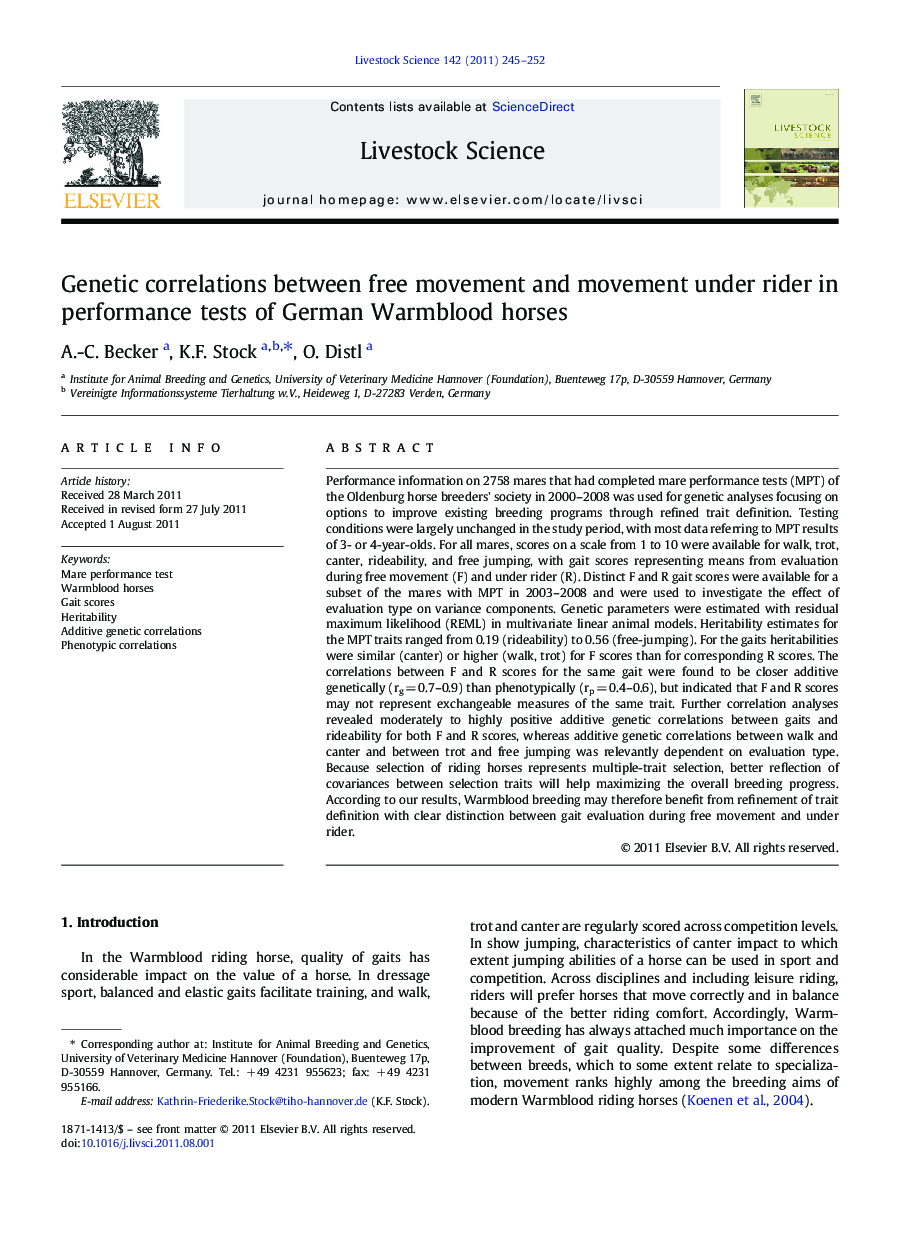| کد مقاله | کد نشریه | سال انتشار | مقاله انگلیسی | نسخه تمام متن |
|---|---|---|---|---|
| 5790771 | 1553990 | 2011 | 8 صفحه PDF | دانلود رایگان |
عنوان انگلیسی مقاله ISI
Genetic correlations between free movement and movement under rider in performance tests of German Warmblood horses
دانلود مقاله + سفارش ترجمه
دانلود مقاله ISI انگلیسی
رایگان برای ایرانیان
موضوعات مرتبط
علوم زیستی و بیوفناوری
علوم کشاورزی و بیولوژیک
علوم دامی و جانورشناسی
پیش نمایش صفحه اول مقاله

چکیده انگلیسی
Performance information on 2758 mares that had completed mare performance tests (MPT) of the Oldenburg horse breeders' society in 2000-2008 was used for genetic analyses focusing on options to improve existing breeding programs through refined trait definition. Testing conditions were largely unchanged in the study period, with most data referring to MPT results of 3- or 4-year-olds. For all mares, scores on a scale from 1 to 10 were available for walk, trot, canter, rideability, and free jumping, with gait scores representing means from evaluation during free movement (F) and under rider (R). Distinct F and R gait scores were available for a subset of the mares with MPT in 2003-2008 and were used to investigate the effect of evaluation type on variance components. Genetic parameters were estimated with residual maximum likelihood (REML) in multivariate linear animal models. Heritability estimates for the MPT traits ranged from 0.19 (rideability) to 0.56 (free-jumping). For the gaits heritabilities were similar (canter) or higher (walk, trot) for F scores than for corresponding R scores. The correlations between F and R scores for the same gait were found to be closer additive genetically (rg = 0.7-0.9) than phenotypically (rp = 0.4-0.6), but indicated that F and R scores may not represent exchangeable measures of the same trait. Further correlation analyses revealed moderately to highly positive additive genetic correlations between gaits and rideability for both F and R scores, whereas additive genetic correlations between walk and canter and between trot and free jumping was relevantly dependent on evaluation type. Because selection of riding horses represents multiple-trait selection, better reflection of covariances between selection traits will help maximizing the overall breeding progress. According to our results, Warmblood breeding may therefore benefit from refinement of trait definition with clear distinction between gait evaluation during free movement and under rider.
ناشر
Database: Elsevier - ScienceDirect (ساینس دایرکت)
Journal: Livestock Science - Volume 142, Issues 1â3, December 2011, Pages 245-252
Journal: Livestock Science - Volume 142, Issues 1â3, December 2011, Pages 245-252
نویسندگان
A.-C. Becker, K.F. Stock, O. Distl,